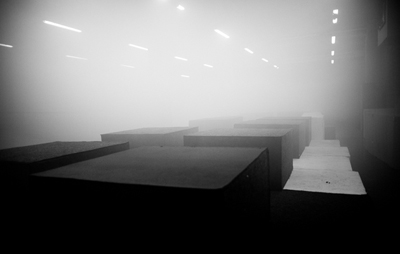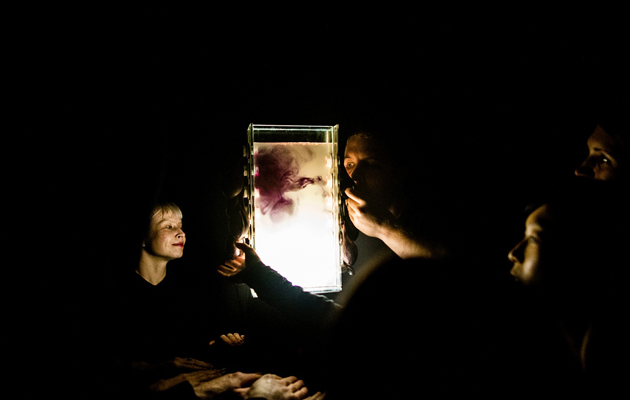|
|
||
|
Peter Smisek enjoyed relinquishing control during an artistic dining experience. But is there anything that architects and designers can learn from this? It is not often that an invitation comes to Icon’s mailbox with promise of food. So when I received an email from the Waldorf Project, enticing me with ‘an immersive art experience combining gastronomy with sound, art, design, architecture, choreography and theatre’, I envisioned an all-together jolly affair, perhaps slightly absurdist à la the Futurist Cookbook, possibly with some fried crickets thrown in. Naturally, I RSVPd immediately. But of course, what I got was much more radical. The experience was absolutely totalising, and the food – if it can be called that – was but one of the components of what was definitely an ‘immersive experience’, directed by British artist Sean Rogg. And there was design as well: strange contraptions and surfaces from which some of the ‘dishes’ were served. The dishes themselves were unidentifiable, strong-flavoured, mostly liquid – and did perhaps beg the question why, in the age of pocket computers, do we insist on having a sourdough toast. Architecture was there too, and in the darkened, black performance space, outlines, tactile surfaces and the tunnels which the guests had to crawl through served to heighten the sensorial experience. In a world where every surface needs to be scrubbed clean, this again questions our need to impose a bland uniform order on everything.
This might sound surreal and slightly unpleasant, but provoking this innate sense of unease and excitement was only possible within the rigorous heath and safety parameters imposed on the performance (indeed, a licence issued by the council was taped onto the nondescript entrance to the event space). On closer inspection, the invitation did mention that the evening would be ‘staged under the concept of the Japanese emotion amae, meaning a temporary surrender in perfect safety’. Perhaps I should read my emails more carefully. For my part, it certainly delivered. In many ways, the world as a gesamtkunstwerk is an absurd idea – not only unachievable, but also inhumane. In everyday life, architecture and design should empower, rather than subjugate, their participants. But perhaps we do need safe spaces and rituals in which we can suspend ourselves and relinquish control, even if for a while. Seeing those come into being would be, in my view, more thrilling that seeing another new overpriced chair by one’s favourite designer. Chapter three of the Waldorf Project runs until 4 December 2016 in London |
Words Peter Smisek |
|
|
||
|
|
||





















